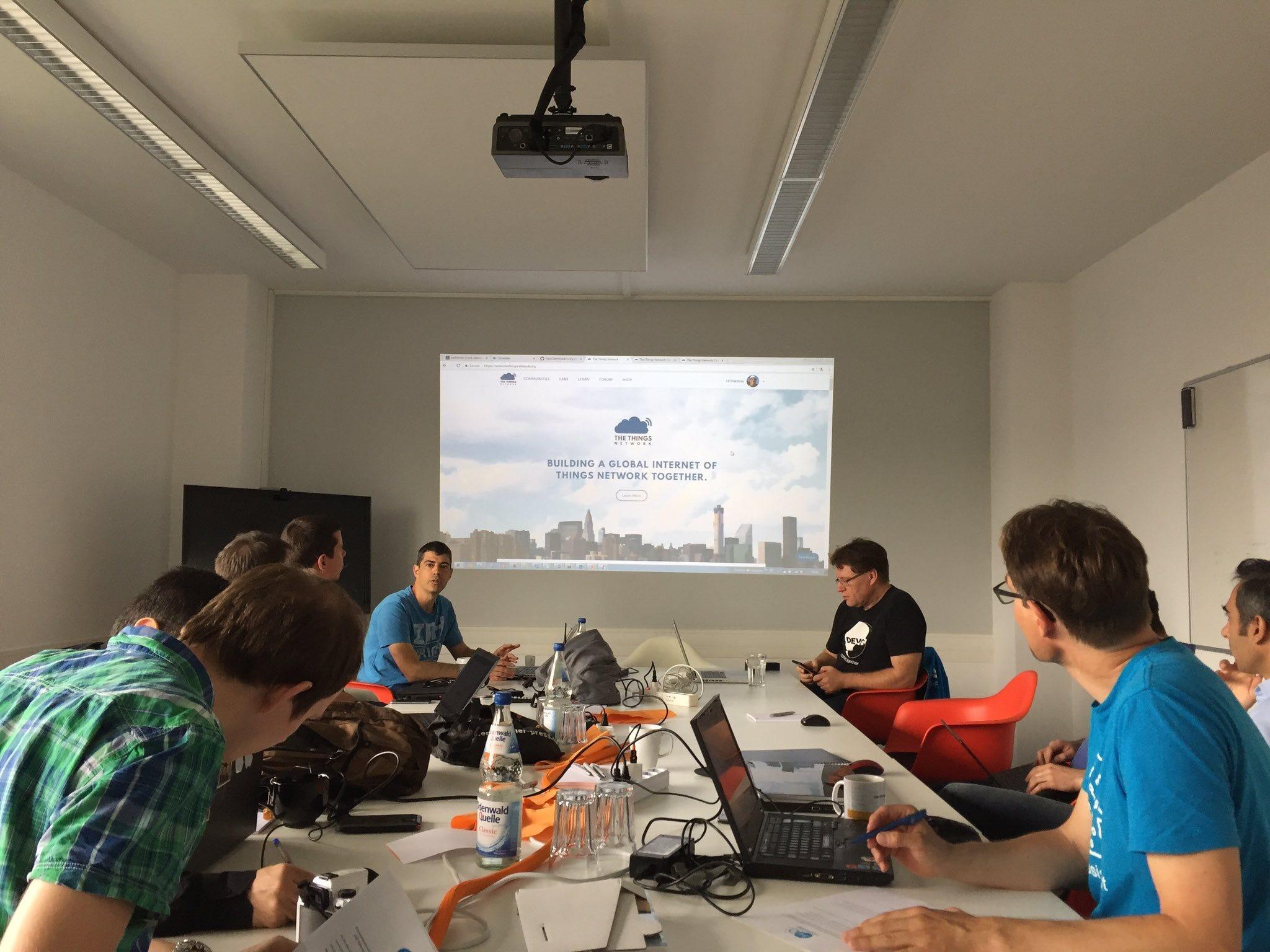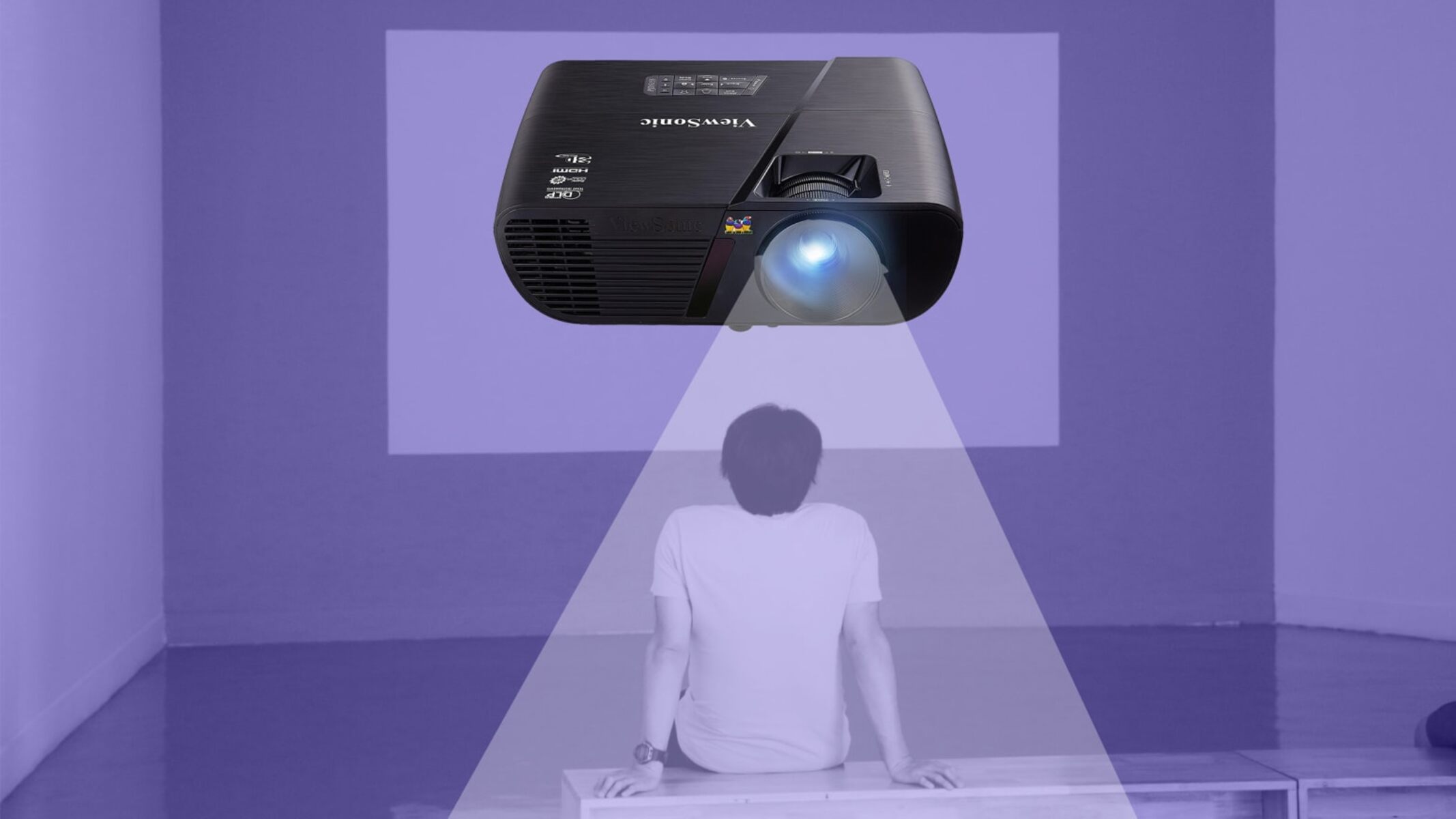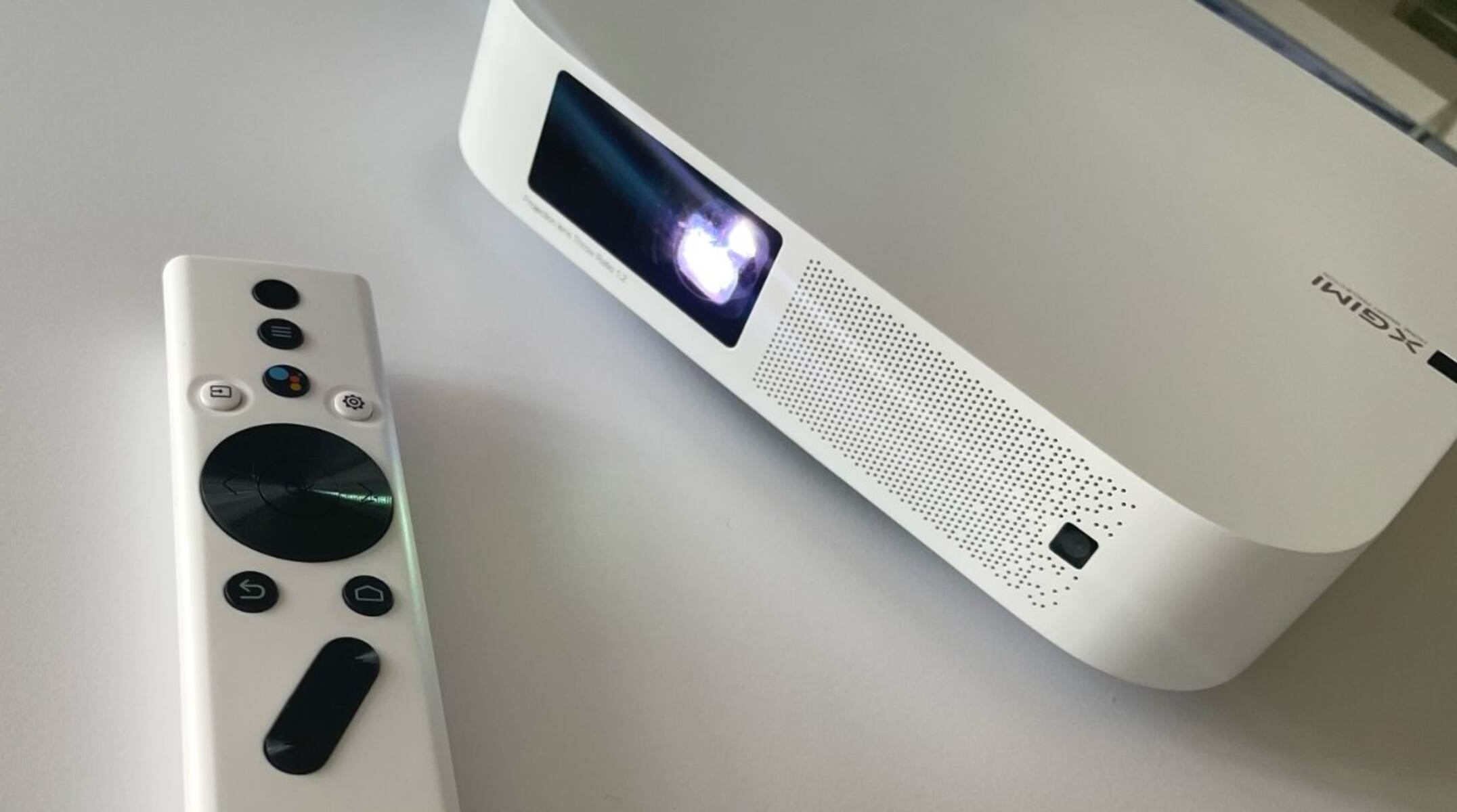Introduction
Projectors have become an integral part of our daily lives, whether it’s for business presentations, educational purposes, or home entertainment. These devices are designed to display high-quality images and videos on a large screen, providing an immersive viewing experience. However, did you know that projectors can be hacked to gain unauthorized access and control?
In this article, we will explore the world of projector hacking, uncovering common techniques used and explaining how to successfully hack a projector. But before we dive into the details, let’s first understand what projectors are and how they work.
A projector is an optical device that projects an enlarged image onto a surface, typically a screen or a wall. It consists of several components, including a light source, lens, and imaging system. The light source, usually a lamp or LED, produces the light necessary to create the image, which is then focused and projected through the lens.
Understanding the inner workings of projectors is essential in order to exploit vulnerabilities and manipulate their functionality. While hacking a projector may seem daunting, with the right knowledge and approach, it can be an intriguing challenge.
This article aims to provide insights into the world of projector hacking, covering common techniques used to gain unauthorized access, preparing for hacking, step-by-step instructions on hacking a projector, as well as tips for successful hacking. Additionally, we will discuss the ethics and risks associated with projector hacking.
So, if you’re ready to delve into the fascinating realm of projector hacking, let’s get started!
Understanding Projectors
Before we explore the world of projector hacking, it’s important to have a clear understanding of how projectors work. By understanding the fundamental principles behind these devices, we can better comprehend the vulnerabilities that can be exploited for hacking purposes.
A projector consists of three main components: the light source, the imaging system, and the lens. Let’s take a closer look at each of these components:
1. Light Source: The light source is a crucial part of any projector. It provides the illumination necessary to create the projected image. Traditionally, projectors used lamps as their light source, but LED technology has become increasingly popular due to its energy efficiency and longer lifespan. The light emitted by the source passes through a series of filters, mirrors, and color wheels to ensure the correct color reproduction.
2. Imaging System: The imaging system is responsible for creating the visual content that is projected onto the screen or surface. There are two main types of imaging systems: LCD (Liquid Crystal Display) and DLP (Digital Light Processing). LCD projectors use liquid crystal panels to display the individual pixels of the image, while DLP projectors use an array of micro mirrors to reflect light and create the image. Both systems have their advantages and disadvantages, but they ultimately produce high-quality visuals.
3. Lens: The lens in a projector plays a vital role in focusing and projecting the image onto the desired surface. It allows for adjustments in terms of focus, zoom, and keystone correction to ensure a clear and accurate projection. The quality of the lens directly affects the sharpness and clarity of the projected image.
Aside from these main components, projectors may also have additional features such as built-in speakers, connectivity options (HDMI, VGA, USB), and advanced image processing capabilities. These additional features can vary depending on the brand and model of the projector.
Now that we have a basic understanding of how projectors work, we can delve into the intriguing realm of projector hacking. In the next section, we will explore common hacking techniques employed to gain unauthorized access to projectors and manipulate their functionality.
Common Projector Hacking Techniques
Projector hacking involves exploiting vulnerabilities and weaknesses in the projector’s software or hardware to gain unauthorized access and control. While the specific techniques may vary depending on the model and brand of the projector, there are several common hacking techniques that are frequently used. Let’s explore a few of them:
1. Default Password Exploitation: Many projectors come with default administration passwords that users often fail to change. Hackers can take advantage of this by accessing the projector’s administration interface and gaining full control over its settings and functionalities. It is crucial to always change default passwords to secure the projector.
2. Firmware Modification: Projectors run on firmware, which is the software that controls the device’s operation. Hackers can modify the projector’s firmware to bypass security measures or add malicious code that allows them to take control of the projector remotely. Updating firmware regularly and only from trusted sources is essential to prevent unauthorized access.
3. Network Exploitation: If a projector is connected to a network, it becomes susceptible to network-based attacks. Hackers can identify vulnerable projectors on the network and exploit weaknesses in their security protocols to gain unauthorized access. Securing the network and implementing robust firewall and encryption measures are vital in preventing these types of attacks.
4. Physical Access: Sometimes, hackers gain access to projectors physically, allowing them to manipulate the device directly. This can involve tampering with the projector’s hardware, such as inserting a malicious device or modifying internal components. Adequate physical security measures, such as locked cabinets or surveillance cameras, can deter unauthorized physical access to projectors.
5. Remote Control Interference: Projectors often come with remote controls that use infrared (IR) signals to communicate with the device. Hackers can use specialized tools to intercept and replay these IR signals, effectively gaining control over the projector’s functions. Using remote control features that utilize secure communication protocols can mitigate the risk of this type of attack.
It is crucial to note that projector hacking is considered unethical and illegal unless it is carried out with proper authorization for security testing purposes. Knowing these common hacking techniques helps users understand the importance of securing their projectors and taking necessary precautions to prevent unauthorized access.
Now that we have explored the common projector hacking techniques, let’s move on to the next section, where we will discuss how to prepare for hacking a projector.
Preparing for Hacking
Before attempting to hack a projector, it is essential to adequately prepare to increase the chances of a successful hack while minimizing the risk of causing damage or getting caught. Here are some key steps to follow when preparing for hacking a projector:
1. Research: Start by conducting thorough research on the specific make and model of the projector you intend to hack. Understand its features, firmware version, known vulnerabilities, and any previous hacking attempts or vulnerabilities that have been patched. This information will help you identify potential entry points for your hack.
2. Create a Test Environment: It is crucial to set up a controlled test environment for your hacking attempts. The ideal scenario is to have a duplicate or similar projector that you can experiment with without the risk of damaging or disrupting a live projector. This test environment allows you to explore different hacking techniques without consequences.
3. Gather Required Tools: Determine the tools and equipment you will need for the hack. This can include software tools for scanning and identifying vulnerabilities, hardware tools for physical access, debugging tools, and network analysis equipment. Ensure that you have all the necessary tools ready before starting the hacking process.
4. Secure Authorization: Hacking a projector without proper authorization is illegal and unethical. If you are hacking a projector for security testing purposes, make sure you have explicit permission from the owner or relevant authorities. Unauthorized hacking can lead to legal consequences, so it is crucial to perform hacking activities legally and responsibly.
5. Backup and Restore: Before attempting any hacks, create a backup of the projector’s current settings and firmware. This ensures that you have a restore point in case anything goes wrong during the hacking process. Having a backup helps maintain the integrity of the projector and simplifies the restoration process if needed.
6. Test Vulnerabilities: Once you have set up your controlled test environment and gathered the necessary tools, start identifying vulnerabilities in the projector’s firmware, network settings, default configurations, and authentication mechanisms. Conduct comprehensive vulnerability assessments to understand the weaknesses that can be exploited during the hacking process.
7. Stay Updated: Projector manufacturers regularly release firmware updates to address security vulnerabilities. Stay updated with the latest patches and security advisories to ensure you are hacking against the most vulnerable versions of the firmware. Keep an eye on online forums and communities where security researchers discuss projector vulnerabilities and exploits.
By following these preparation steps, you can approach projector hacking in a responsible and organized manner. Remember to always prioritize legal and ethical guidelines when engaging in any hacking activity.
In the next section, we’ll delve into the step-by-step process of hacking a projector. So, stay tuned!
Hacking a Projector
Now that we have laid the groundwork and prepared for hacking a projector, let’s dive into the step-by-step process of hacking a projector. It’s important to note that conducting unauthorized hacking activities is illegal and unethical. This section is meant to provide general knowledge and awareness about the hacking process for educational purposes only.
Step 1: Reconnaissance: Begin by gathering as much information as possible about the target projector, such as its make, model, firmware version, and network connectivity. This information will help you identify potential vulnerabilities to exploit.
Step 2: Vulnerability Assessment: Conduct a thorough vulnerability assessment to determine potential weaknesses in the projector’s software or hardware. This can include analyzing the projector’s firmware, default settings, known vulnerabilities, and security protocols.
Step 3: Exploitation: Once you have identified a vulnerability, proceed with exploiting it. This can involve various techniques, such as leveraging default password exploits, injecting malicious code into the projector’s firmware, or gaining physical access to the device.
Step 4: Gaining Control: The goal of hacking a projector is to gain unauthorized control over its settings and functionalities. Depending on the vulnerability exploited, you may be able to manipulate the projection settings, disable security features, or even gain remote access to the projector.
Step 5: Maintaining Access: If you successfully gain control over the projector, it’s important to maintain persistence. This involves ensuring that any changes you make persist even after the projector is rebooted. This may require modifying settings or injecting code to maintain control over the device.
Step 6: Covering Tracks: To avoid detection, it’s crucial to cover your tracks and remove any evidence of your hacking activities. This may include deleting logs, erasing traces of your presence, and restoring the projector to its original state.
Remember, hacking a projector without proper authorization is illegal and unethical. This step-by-step guide is provided for educational purposes only. It’s important to always adhere to legal and ethical guidelines and obtain proper authorization before engaging in any hacking activities.
Now that we have gone through the process of hacking a projector, let’s move on to the next section, where we will discuss some tips for successful hacking.
Tips for Successful Hacking
When it comes to hacking a projector, success depends on a combination of technical skills, strategic thinking, and attention to detail. Here are some valuable tips to increase your chances of successfully hacking a projector:
1. Deep Technical Understanding: Develop a strong understanding of projectors, their firmware, hardware components, network protocols, and security mechanisms. This knowledge will enable you to identify vulnerabilities and exploit them effectively.
2. Stay Updated: Keep yourself updated with the latest advancements in projector technology, firmware updates, and security measures. Stay active in online forums and communities where researchers share information about projector vulnerabilities and hacking techniques.
3. Use Security Testing Tools: Utilize specialized security testing tools to identify vulnerabilities and weaknesses in the projector’s software or hardware. Tools like vulnerability scanners, packet analyzers, and firmware analysis frameworks can help you uncover potential entry points for exploitation.
4. Document your Findings: Keep detailed documentation of your hacking attempts, including the methods, techniques, and tools used, as well as the vulnerabilities discovered. This documentation will not only help you track your progress but also serve as valuable reference material for future hacking endeavors.
5. Coordinated Approach: Take a systematic and coordinated approach to hacking a projector. Start with reconnaissance and vulnerability assessment, followed by exploitation, gaining control, and maintaining persistence. Avoid rushing through the process to ensure thoroughness and accuracy.
6. Practice Ethical Hacking: Conduct hacking activities responsibly and within legal boundaries. Perform hacking activities only with proper authorization and for legitimate security testing purposes. Ethical hacking helps protect the rights and privacy of individuals while contributing to a safer digital environment.
7. Learn from Failure: Hacking a projector can be challenging, and not every attempt may result in success. Learn from your failures, analyze what went wrong, and adapt your strategies accordingly. Persistence and continuous learning are key to improving your hacking skills.
8. Share Knowledge and Collaborate: Engage with the cybersecurity community, attend conferences, and participate in hacking competitions and bug bounty programs. Collaborating with fellow hackers and security enthusiasts allows you to learn from their experiences and gain new insights into projector hacking.
Remember, hacking projectors without proper authorization is illegal and unethical. The tips provided here are intended for educational purposes and ethical hacking activities only. It’s essential to prioritize legal and ethical guidelines and ensure you have the necessary permissions before attempting any hacking activities.
Now that we have covered tips for successful hacking, let’s move on to the next section, where we will discuss the risks and ethics associated with projector hacking.
Risks and Ethics of Projector Hacking
Projector hacking, like any form of hacking, carries inherent risks and ethical considerations that must be carefully evaluated. Understanding these risks and adhering to ethical guidelines is crucial for responsible engagement in projector hacking activities.
Risks: By hacking a projector, you expose yourself to potential legal consequences. Unauthorized hacking is illegal and can result in civil and criminal charges, including fines and imprisonment. Additionally, hacking a projector without proper precautions can lead to unintended damage to the device, rendering it unusable or compromising its functionality.
Ethics: Ethical considerations play a vital role in projector hacking. It is essential to obtain proper authorization from the owner of the projector or relevant authorities before engaging in any hacking activities. Unauthorized hacking violates the privacy and security of individuals and organizations, and it is crucial to perform hacking activities responsibly and with integrity.
Responsible hackers adhere to the following ethical principles:
1. Permission: Always seek proper authorization before attempting to hack a projector. This can be in the form of a written agreement, a bug bounty program, or security testing engagements with the owner’s consent.
2. Legal Compliance: Hack within the boundaries of the law. Familiarize yourself with the legal regulations regarding hacking and ensure that your actions do not violate any applicable laws or regulations.
3. Data Privacy: Respect the privacy of individuals and organizations. Avoid accessing or manipulating sensitive data present on the projector or the connected network during the hacking process.
4. Responsible Disclosure: If you discover vulnerabilities in a projector, report them promptly to the manufacturer or owner. Follow responsible disclosure practices to ensure that the vulnerabilities are addressed and patched, thus enhancing the security of the device.
5. Skill Development: Continuously improve your hacking skills through legal and ethical means. Engage in professional training, attend cybersecurity conferences, and participate in bug bounty programs to enhance your knowledge and expertise in projector hacking.
Adhering to these ethical principles helps protect the rights and security of individuals while fostering a responsible and productive hacking community.
It is important to note that the information provided in this article is for educational purposes only. The intent is to raise awareness about projector hacking and its associated risks and ethical considerations. Hacking projectors without proper authorization is illegal and unethical.
In the next section, we will conclude our exploration of projector hacking. So, let’s wrap up and summarize the key points discussed thus far.
Conclusion
Throughout this article, we have delved into the intriguing world of projector hacking, exploring the different components of projectors, common hacking techniques, preparation steps, the hacking process itself, and the risks and ethics associated with this practice.
Projector hacking can be a fascinating endeavor that requires technical knowledge, strategic thinking, and adherence to ethical guidelines. However, it is important to remember that hacking projectors without proper authorization is illegal and unethical. This article serves as an educational resource to shed light on projector hacking while emphasizing the importance of responsible and legal hacking practices.
By understanding the inner workings of projectors, identifying vulnerabilities, and following ethical guidelines, individuals can protect their projectors from unauthorized access and manipulation. Additionally, manufacturers can use this information to enhance the security of their projector systems and protect users from potential attacks.
We have discussed the risks associated with unauthorized hacking, including potential legal consequences and the possibility of causing unintended damage to the device. It is essential to approach projector hacking responsibly, prioritizing legal compliance and data privacy, and seeking proper authorization before engaging in any hacking activities.
Projector hacking is a reminder of the importance of maintaining security in our increasingly interconnected world. By understanding vulnerabilities and staying updated with the latest security measures, we can mitigate the risks posed by potential hackers.
We hope that this article has provided valuable insights into the realm of projector hacking, including its techniques, preparations, and ethical considerations. Remember to use this knowledge responsibly and legally, respecting the rights and privacy of others.
As technology continues to evolve, it is crucial that we remain vigilant in protecting ourselves and our devices from potential threats. By being aware of projector hacking and taking necessary security measures, we can ensure a safer and more secure digital environment for all.

























